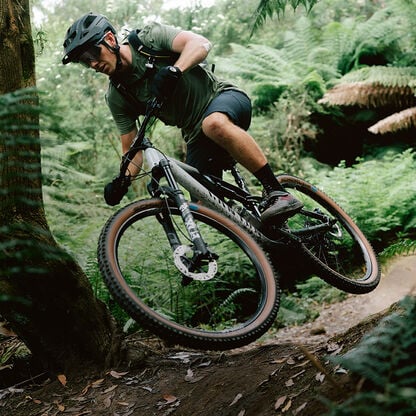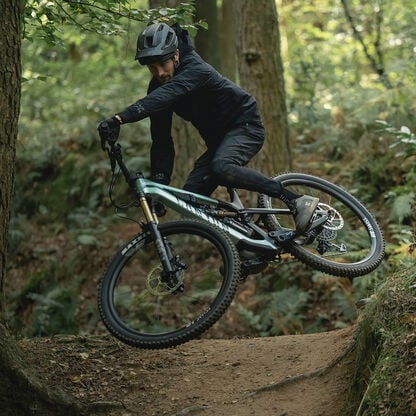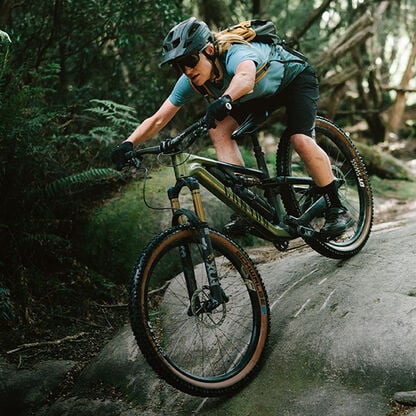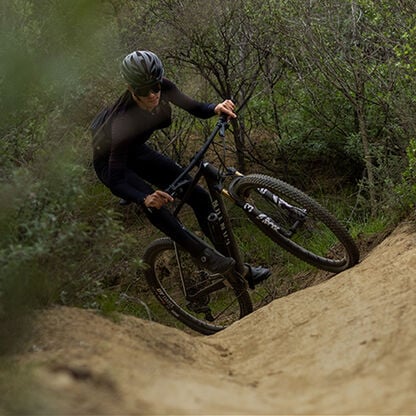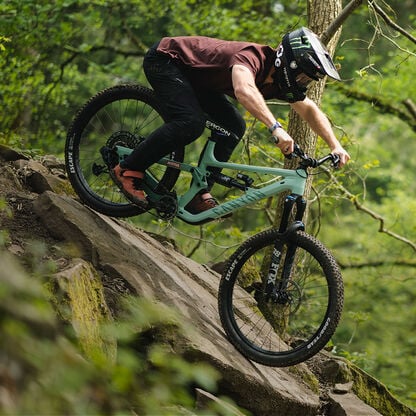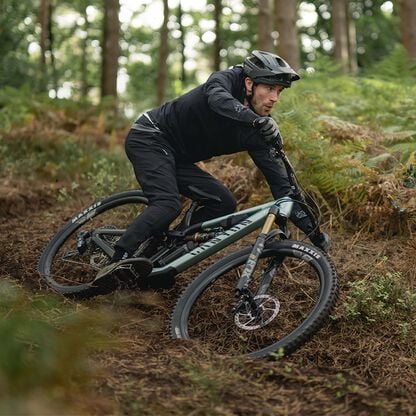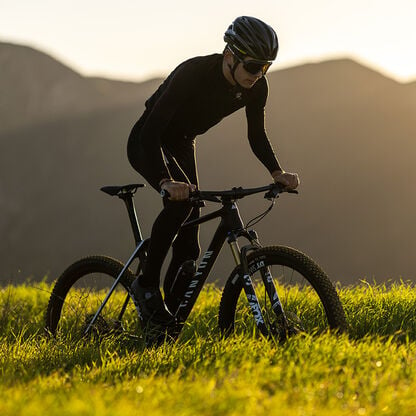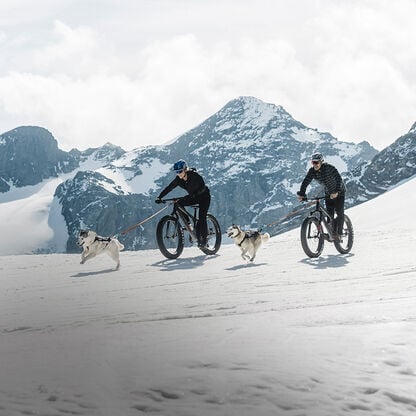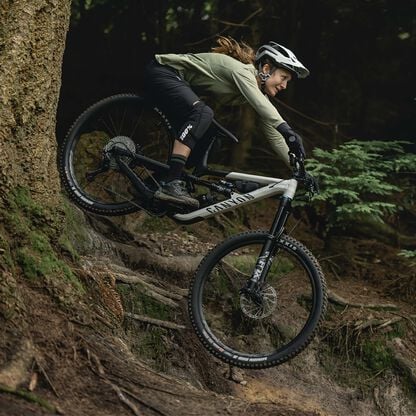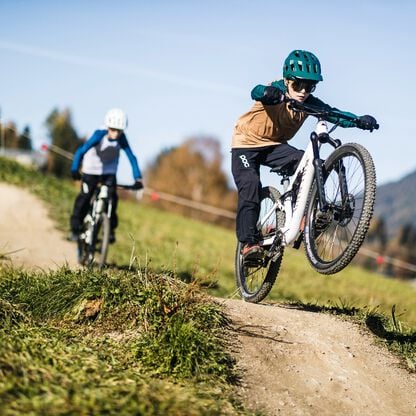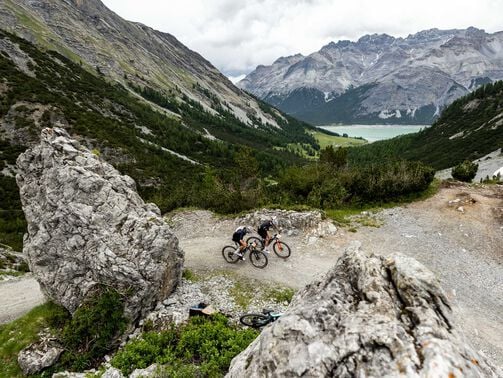When to change mountain bike tyres and how to do it: A complete guide
We’re going to teach you how to change a mountain bike tyre in this clear, comprehensive guide. And don’t worry, there’s also a great Canyon CLLCTV video with Aaron Pelttari that shows you how to do each step. Let’s get it!


Tyres! Not the most thrilling part of your mountain bike, sure, but you certainly can’t get very far without a good pair of boots. They keep you safe, as well as contributing to the performance of your bike, so it’s good to take a minute every now and then to care for your rubber – which is why we wanted to create a guide to help you know when and how to change mountain bike tyres.
Contents
Importance of maintaining mountain bike tyres
Maintaining mountain bike tyres is crucial for ensuring safety, performance, and longevity. Proper tyre maintenance, including regular inspection for damage, maintaining optimal pressure, and monitoring tread wear, helps prevent unexpected blowouts and punctures that can lead to accidents.
Additionally, well-maintained tyres provide better traction and handling on various terrains, enhancing the overall riding experience. Timely upkeep, such as replenishing sealant in tubeless tyres and avoiding excessive wear, extends the life of the tyres, making rides more reliable and enjoyable while reducing the frequency and cost of replacements.
How long do mountain bike tyres usually last?
The lifespan of a good MTB tyre should usually run to about 5,000 kilometres of riding. That being said, there are no hard and fast rules on this. The life of a tyre depends on how you ride it, the overall quality of the product, and even smaller unnoticed factors like how well you look after your bike.
If you put fast-rolling summer tyres on your mountain bike then use it to slop around in the mud all winter, that will accelerate the rate at which their performance degrades. If you only ride very rarely, the rubber within your tyres may age without you actually using them – and that would reduce the total kilometres you’d expect to ride on them.

When to change mountain bike tyres: The warning signs
Here are some of the signs to watch out for, serving to warn you when it’s time to change those mountain bike tyres.
Balding
The gradual wearing down of the knobs on your tyre is probably the most visible indicator that it’s time to change your rubber. It can be very revealing to look at a box fresh version of your current tyres, to get a true sense of just how far they’ve worn down. Pay particular attention to the siping, the thin slits cut into the surface of the rubber to improve grip, as this is typically one of the first things about your tyre’s tread pattern to wear away.
Missing knobs
If you love hitting turns really hard and getting your lean on, that will take its toll on the side knobs of your tyre’s tread pattern. It may even cause them to separate entirely and fall off, or split badly so they actually no longer provide you any grip.
Cracking
If your tyres are old and worn out, they may start to crack on the sidewalls. This can cause them to leak air if you’re running them tubeless, but it also weakens the structural integrity of the tyre. Prolonged exposure to sunlight can also cause this cracking effect, so avoid storing your bike somewhere in the direct path of the sun’s rays.
Slipping and sliding
If your wheels are washing out a lot, or you’re struggling to get up climbs that you ordinarily find manageable, this could be down to the age of your tyres. If you lose tread profile, you lose grip, and that creates that slipping and sliding that you experience while in the saddle.
Tools and materials needed
When you’re changing a conventional tyre with an inner tube inside, you don’t need too many bike tools:
- A fresh tyre
- Some tyre levers
- A pump
For tubeless setup, you’ll also need some tubeless accessories:
- Tubeless valves
- Scissors
- Tubeless rim tape
- Tubeless tyre sealant
- A cleaning product to clean your rim bed (disc brake cleaner, white spirit, isopropyl alcohol)
- Track pump with burst tank
It may sound obvious, but it’s also important to use a tubeless-ready tyre. Not all tyres can be run tubeless and it would be hugely frustrating to get all your other tools lined up only to find that the product you bought is not tubeless-compatible.
How to change a mountain bike tyre: Step-by-step guide
We’re gonna go ahead and assume you’re running tubeless on your mountain bike, as this is the most common and effective choice for mountain bikers. If you need help changing a tyre with an inner tube inside, check out our guide to changing road and gravel tyres.
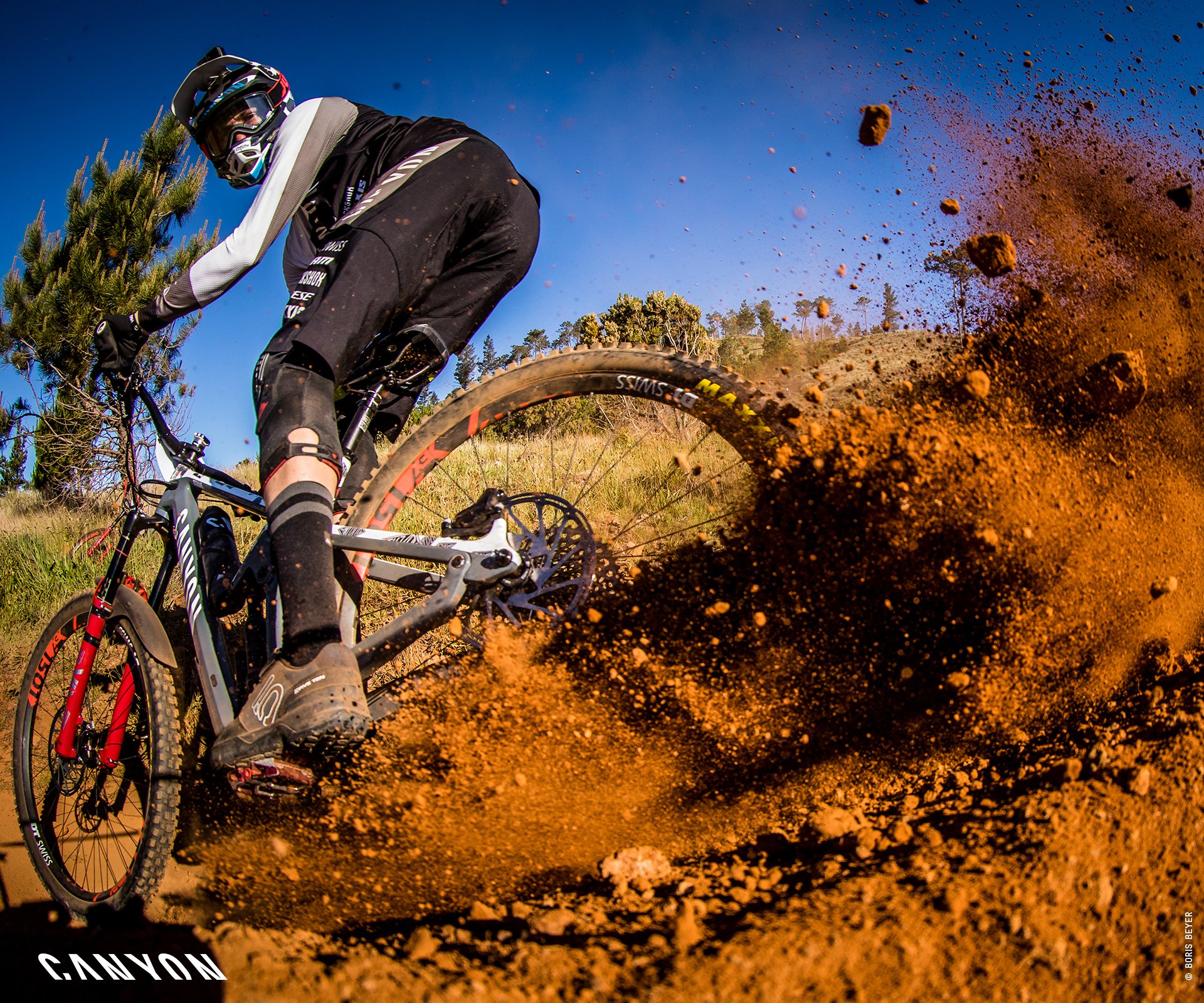




What is tubeless and how does it work?
Tubeless bike tyres eliminate the need for inner tubes by using airtight seals between the tire and rim. They consist of tubeless-ready tyres with special beads, tubeless-compatible rims, tubeless valves, and sealant. The tyre is mounted onto the rim, and sealant is added inside before inflating. High pressure helps the tyre bead to lock into place, creating an airtight seal. As the bike rolls, the sealant spreads inside the tyre, sealing small punctures and leaks, allowing for a smoother, more reliable ride with lower risk of flats.
Tubeless is particularly prevalent in mountain biking because of the far greater number and intensity of impacts that your wheels encounter. Taking a big hit on a wheel with an inner tube frequently leads to pinch flats (where the tube gets caught between the rock and the rim, causing it to split and go flat in seconds). Not only are these a massive downer, they’re also super dangerous as you’re likely to lose control of your bike.
How to change a tubeless tyre on your MTB
So let’s get into it! First you’ll want to remove the old tyre. This can normally be done using a tyre lever, although you may need to separate the tyre bead from the rim and push it into the centre of the wheel rim to loosen things up.
Step one – set up your rim bed.
If you’re replacing tyres that already had sealant in, you will find there’s dried sealant on the rim tape. Wipe this off with a piece of dry clean cloth or paper towel.
If you are installing tubeless for the first time, you will also need to apply tubeless rim tape. If that’s the case, wipe the rim bed with the disc brake cleaner or other white spirit first. This ensures the surface is perfect and creates the best conditions for your tubeless rim tape to stick firmly to the rim.
Once your rim tape is securely stuck to the rim and wiped free of any residue, you’re ready to move onto step two!
Step two – install a tubeless valve
If you’re working with fresh rim tape, you’ll need to pierce it directly over the valve hole on your rim, so that you can get the valve in. Try to use something small and pointy that will make a hole smaller than the diameter of your valve, to create a snug fit and promote a nice secure seal.
Remove the lock ring, insert your valve through the hole in the rim, then secure it in place with the lock ring.
Step three – put your tyre onto the rim
Get your new tyre onto the rim. Start where you’ve just installed the valve then work your way around and down on both sides at the same time. You should be able to do this with your hands. Don’t put the whole tyre all the way on, as we still need to…
Step four – add sealant
Give your tubeless sealant a good shake. Then check the bottle to see if it has increments drawn on the side to help you judge how much you will add to your tyre. It may also indicate how much sealant is recommended for your specific size of tyre. Add the sealant into the ‘hammock’ created by the part of the tyre you left unfitted. Smoothly rotate the tyre 180° so that the sealant flows down into part of the tyre that’s already fitted into the rim. This keeps the mess contained. Help the remaining part of the tyre onto the rim, until your whole tyre bead is sitting snugly inside. You may need to use a tyre lever for that very last part.
Step five – inflate
We recommend using a track pump with a burst tank to do this. A burst tank – sometimes called a boost tank – allows you to ‘pre-pump’ a bunch of air into the container, ready to release all at once into your tubeless tyre. This allows you to quickly get the mountain bike tyre to a pressure that will help the tubeless sealant create a seal. First open your valve, then inflate the burst tank to the PSI recommended for your tyre. Now you want to attach the hose of the pump to the valve on your tyre. It should screw onto the valve to make a secure fit. Your pump should have a switch, button or lever to release the air stored in the burst tank, which will then flow through the hose and directly into the tyre. Keep pumping air into the tyre to avoid it going down too quickly. The air inside will move to all the unsealed ‘gaps’ between the tyre and the rim, and the sealant will also get pushed to these places and close them up.
Step six – work the sealant around
You want to help the sealant reach all the potential air leaks. Release the pump head from the valve and close the valve tight. Now tip the wheel forward and back, up and down, left to right, to help the sealant inside find all those final unsealed parts of the inside of the rim and tyre. You can spin the wheel on its axle to do this too.
Step seven – check the tyre is seated
You should be able to tell by eye whether the tyre is seated correctly, and you’ll be able to hear if air is still escaping. If necessary, inflate the tyre some more with your pump just to keep the air moving in. The profile of the sidewall should sit evenly in relation to the rim all the way around and on both sides of the wheel.
Give the tyre some time to settle and the sealant to dry, and then you should be all good to go riding!

Tips for maintaining your mountain bike tyres
Like mountain bike maintenance more generally, regularly cleaning your tyres will help to prolong their lifespan and keep them performing well.
You should check the pressures of your tyres often, because running them at too low a pressure will put unnecessary extra wear on them.
Checking the surface of your tyres is also a great habit to get into. You might spot a flint, thorn or piece of glass which would work its way further into the rubber if you were to ride on it.
If you’re running tubeless, you should also keep an eye on sealant levels. You don’t want it to run out or dry up, so checking the sealant in there and topping up every six months or so is a good habit to get into.
Want to learn more about mountain bikes? Our guide to mountain bike geometry is a great explainer on exactly how the angles of your frame impact the way it rides. We also have a comprehensive buyers’ guide for mountain bikers, to help you consider your next investment.
Discover our Mountain Bikes
Did this article help?
Thank you for your feedback
